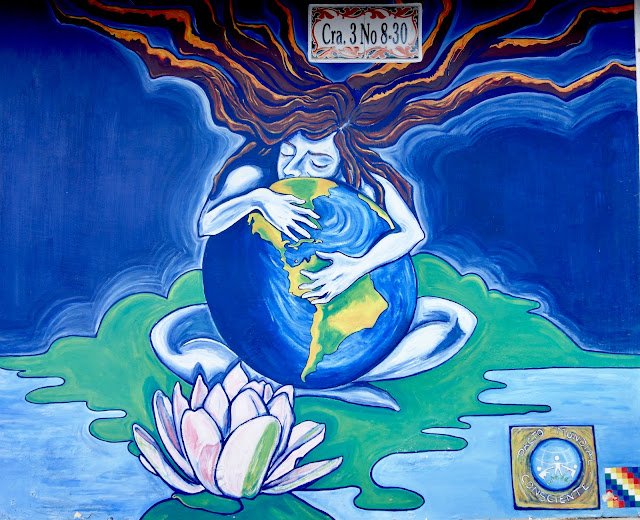I think everyone and his brother heard about our 51-week-long round-the-world trip which started off on March 8, 2018, with a one-way flight to the world’s largest country, Russia. If you haven’t heard about this epic journey yet, don’t worry; I’ve got you covered. While I’ve already published quarterly reports, this post is going to serve as an overview where I’ll also try to address the FAQ briefly.To begin with the easiest one: Would I do it again? Hell yes! I would do it all over and over again in a heartbeat, despite all the downsides of long-term travel!
Was it just like I imagined? For the most part, yes but there are also less romantic parts of long-term travel that may play against expectations. You never know what exactly to expect until you experience it. C’est la vie, right? And above all, this journey was not solely about destinations and highlights but the experience of living on the road, a topic in its own right.
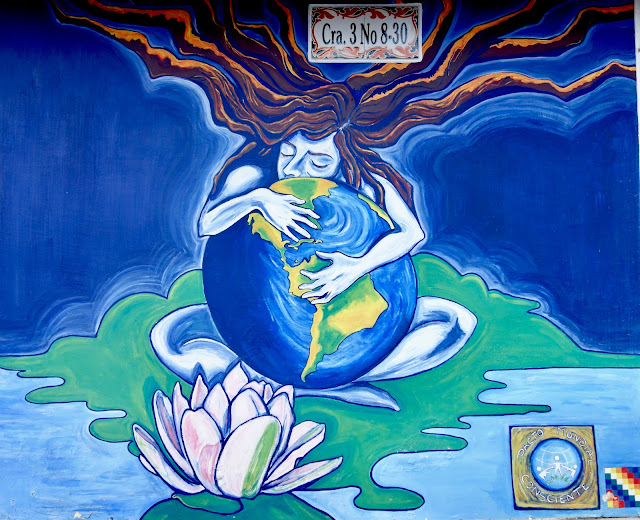
You can read the detailed quarterly round-ups here, however just to name some, before I left on my trip with husband in tow, I had no idea that I would:
- literally freeze my butt off in Arctic Siberia
- put pajamas on and enter a mixed-gender sauna after a female-only naked bathing experience in South Korea
- take baseball lessons from a 4-year-old Japanese boy while working on a farm in Japan
- burn my neck while trying to protect the corals in the Philippines
- join a traditional ceremony as the only foreigner, and receive shell money after getting whipped accidentally in a village in Papua New Guinea
- sleep under the billion-star blanket of the Milky Way in the Australian Outback
- feel as if I was in outer space while watching the Manta Rays fly over my head on a night dive in Hawaii, USA
- not be able to close my jaw for two days straight while visiting Yellowstone National Park in the Continental US
- witness cemeteries turning into fairgrounds during the Day of the Dead celebrations in Mexico
- explore the mountains of Colombia on foot and horseback
- travel along the entire length of the Amazon River in Brazil in the elite class of slow boats sharing a deck and a few toilets with hundreds of people swaying in the hammocks ⠀⠀⠀
I couldn’t have known that I’d experience all these and more before sailing away towards unknown shores. And I’m struggling to fit such an epic year in a ‘brief’ blog post, but I’ll try my best in the subcategories below concerning our route, budget, background, planning, etc.
Round the World Trip
The Route
The main aim of such a long-lasting journey was to be free: free of time and place constraints, free of plans, and free of stress. To be able to go with the flow, there weren’t really any set plans, just a rough idea in my mind that said we would spend around a month in each country and visit Russia coast to coast, Japan, the Philippines, Papua New Guinea, Fiji, some more Pacific Islands, USA, Central America and let’s see if and how far we could get further south.
Our itinerary was not set in stone and in reality, the route evolved as follows: Russia from Saint Petersburg to Irkutsk (1 month), South Korea (10 days), Japan (38 days), the Philippines (1 month), Papua New Guinea (1 week), Australia (1 month), Hawaii (10 days), the Continental US (2 months), Mexico (2 months), Colombia (3 weeks), Brazil (2 months), and Lisbon for 2 nights.
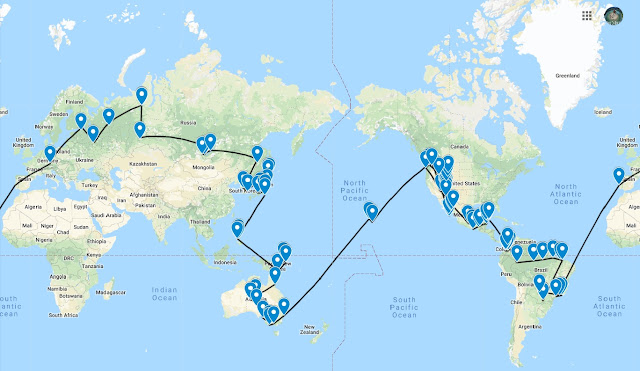
You can view our Round-the-World trip route on Google Maps.
Dreams vs Reality
As you can see, we went with the flow and did not stick to a plan. Before leaving home, I was actually thinking we would spend a lot more time island hopping in the Pacific. Far, far away pieces of paradise on earth. But as we got closer, it became also clearer that all those exotic destinations weren’t more than mere tropical islands. Having fed up with the tropical heat, we steered to Australia for cooler temperatures. And then an unbeatable direct flight deal from Sydney to Hawaii made us skip Fiji completely. No island, no beach in the world could be worth a huge difference in flight fare. So, screw Fiji, Aloha Hawaii!
In the States, we ticked almost all the boxes except for Alaska. Again having a dream-destination in your mind is one thing but when you really start doing your research to make your dreams come true, then it may not feel as appealing as while daydreaming behind a screen. Because back then, I didn’t know Russia is such an amazing country and the Kamchatka Peninsula is far more promising than Alaska. So, I replaced Alaska dream with Kamchatka. Should Kamkatcha turn out not as imagined, I could still take a short flight to Alaska from there, next time obviously.
I knew we would go to Mexico for sure but I had actually no idea if we would have enough time left to travel further south. Given that we skipped the Pacific Islands, we arrived way earlier in the Americas. As we had already visited some countries in Central America and the Caribbean in our previous trips, after much consideration, we decided to visit Colombia and Brazil in the last 3 months.
Of course, as we came to border regions, we reconsidered if we should, for instance, go to Argentina and Uruguay as well, but we didn’t want to rush through the places. Anyway, covering South America on this trip was not in the cards, so we saved the rest of the continent for another time. It was clear from the beginning that one year wouldn’t be enough to cover the entire world or to cross everything off the bucket list. Even a second or third round may not be sufficient, but hey, dreams are there to show you the way.
The most beautiful place
The first question, without exception, every single person asks is the best place/country in the world. There is no answer to this question folks because every destination is unique and special in its own way. How can you compare, for instance, the white desert in Siberian winter to the tropical sand dunes in Brazil? I can’t and I wouldn’t want to miss a thing, but I could perhaps categorize the countries visited as follows:
Russia and Papua New Guinea are the most authentic places from the perspective of culture and people. Both countries have a large number of ethnic groups, not spoiled by mass tourism. As such, the locals treat you from the bottom of their hearts, not as a cash cow.
Australia, in my opinion, offers the worst value for money. Apart from Uluru and the fauna endemic to Australia, there is nothing special about the country. Although not backpacker-friendly as Australia, I’d prefer the USA over Australia at any time. The national parks in the USA are simply fantastic, even if not as wild as in Australia. Naturewise, the USA might get the cup. Speaking of the US, Hawaii is awesome but only if it’s on your way. Otherwise, I don’t think it would be worth the detour, especially from Europe. It’s way too expensive for what you get (e.g. $50 USD for a bed in a hostel dorm).
Colombia is, in my opinion, the least safe country, and the tourist attractions are just mediocre, nothing really special. It’s the only country that we left earlier than thought because none of us really enjoyed it. So, it’s our least favorite destination on this journey.
The Philippines ranks as the most disappointing country. You can read the whys of my opinion in the corresponding quarterly report here.
Japan and South Korea are the most tourist-friendly countries; given the ease of travel, the number of attractions, and safety, they both are always worth a trip.
Brazil is the most laid-back country, and it really felt like a holiday for us. It’s also a country that has swagger. If you want to gain confidence in your body while enjoying the endless summer in paradise with a caipirinha in your hand, go for it 🙂
And finally, Mexico is the jack of all trades, the country that ticks all the boxes a traveler’s heart wishes for great value for money, unique culture, cuisine, diverse flora and fauna, and more. And it’s the country I felt at home from the first moment on that I would even consider settling down for a while.
Background & Preparation
How did the idea of a round-the-world trip come about?
The main reason is my free spirit. As I continued exploring the world on my paid vacations, the world and my bucket list had grown, and grown that I was no longer satisfied with the few weeks of vacation in a year. It’s known that time and money are commodities with an inverse relationship. For me, time has become a more valuable commodity than money that I didn’t want to postpone the things I wanted to do any longer. There is only one life, it’s not a rehearsal and I am not getting any younger. I just had to silence the urge to take action before it was too late.
How long did the preparation phase last and how did you prepare?
Technically, the preparation actually lasted throughout our entire corporate work life. Although there are many ways of traveling the world on an ultra-low budget, we preferred to save up for our financial freedom first. Instead of getting caught in the loop of “wanting more money to have more things, even if we don’t really have the free time to use those things”, we spent our money consciously and invested in real estate. As you might have heard of Abraham Maslow’s Hierarchy of Happiness, we didn’t let a fancy car or the newest tech gadget destroy our “safety” layer, where the majority of our society gets stuck.
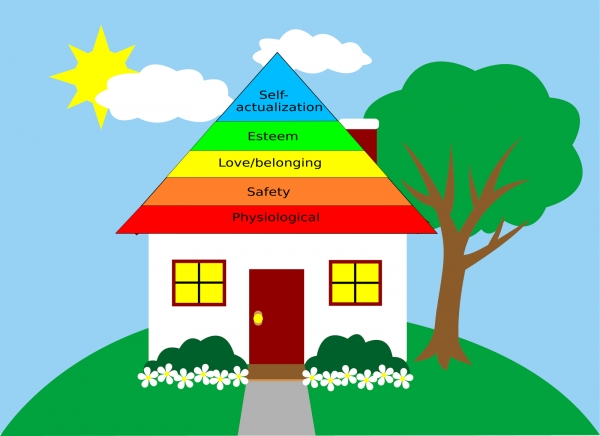
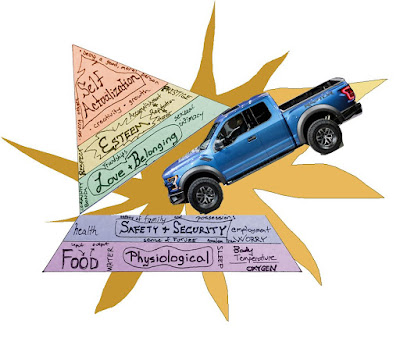
Practically, the preparations started off roughly a year ahead by selling excess items. For example, the carnival costumes should be sold in the carnival season, and the bikes in the summer season. We also prepared an Excel sheet so that we wouldn’t forget a thing: when to terminate which contract, vaccines, visas, etc. Preparing our condo to rent out with furniture was the most time-consuming item on the list.
Especially the last 6 months we were so busy that seemed we’d never be ready. It was so very stressful but we did it. I think it’s easier to sell everything and not to look back instead of trying to get away from the system’s spider web as we did. But as an engineer, I had to minimize the risk. My advice would be not to worry too much and choose the least cumbersome way. When you return home, you most probably won’t want to return to your old routine anyway.
Behind the Scenes: The feeling of living on the road
While a lifelong dream of traveling the world becoming a reality looks amazing on paper, and in many ways it is amazing, it’s not always sunshine and roses. Here are kinda major downsides of long-term travel that nobody asks us about but I would like to mention.
- The continual movement does not leave much time to contemplate and reflect on the experiences. You soon stop appreciating what you have and it gets even harder to feel excited about another world-renowned temple, waterfall, beach, or whatsoever.
- You make far too many disposable friends. Your relationships with your new friends are intense but short-lasting.
- On an around-the-world trip, every single day feels like a dream that you easily lose track of reality, days of the week, months, seasons…The year 2018 feels like a blackout for me and I’m still trying to embody all the memories.
- Every single day feels like Saturday but traveling full time is a 24/7 job that can get quite stressful. I thought we traveled slowly to avoid travel burnout, but we couldn’t really avoid it. It’s quite hard to maintain sanity and balance, to find a tempo that does not make you feel tired.
- Spending 24/7 with your partner is a real challenge. Even though our different interests allowed us to spend time on our own every now and then, at the end of the day all you have is a tiny room that you have to share with one and the same person. There is no office to escape.
- Long-term travel is not like your typical vacation. Unless you are a millionaire, sooner or later, you’ll have to leave your comfort zone. Did you know that we spent roughly 8 weeks out of 51 on the road, just to get from A to B?
- I, as an expat, personally didn’t miss my home or routine, because I had everything I needed with me, including my hubby. The only complaint I had was not being able to do sports regularly and eat healthy food. As a result, I caught cold way more often than when I was having a healthy lifestyle back home. For Tom, it was the first time away from home and his beloved ones for so long. He missed his food, his parents, his comfortable bed, and all. But he remained strong, despite losing his Grandma while we were on the other side of the planet.
- After a year on the road, I seem to have found the best remedy: have a base where you can return after traveling to certain regions for a period of, say, 3-6 months. Experiencing new things, participating in new activities, and seeing new sights every single day is simply not sustainable as life can’t be a ‘trip’ all the time. It’s not possible to feel the joy of the first day after a while, and it’s also quite cumbersome to carry around the gear for all probable weather conditions. We carried around way too much stuff with us, even though we sent two packages back home. For instance, my scuba fins traveled all around the world, including Siberia just in case I got to dive a couple of times occasionally. Now, I know that I would leave my scuba gear behind when I go to Siberia next time 🙂
We consider ourselves extremely lucky for not experiencing a major mishap. We sure got sick way too often, Tom got even bitten by a dog, but we didn’t need to visit a doctor.
We sure lost some valuable items, but nothing got stolen, nor we did get mugged. The only serious annoyance was a fraudulent credit card transaction that I had to deal with in the last few weeks of our journey. And we sure argued with each other so very often that we wanted to run away more than once, but we still managed to stick together. As said, this journey was not only about discovering the world but also ourselves. Despite all the downsides, we stand stronger today and are so proud of ourselves for passing such an endurance test!
Budget $$$
I saved the best for last. So, here is the second most frequently asked question: and, how much did you spend? Again, I don’t think there is an objective answer to this question, because travel style differs from person to person hugely. But for the record, here you go:
We had no income except for the rent of our condo. The idea was to cover the basic expenses like lodging, food, and transportation within a country from the rent, and to cover the activities, tours, and flights from our savings. BTW, we didn’t buy a round-the-world flight ticket, instead, we just booked the flights on the go. Before we set off, the estimated shrinkage in our savings was to be around that of a new VW Golf or maybe Touran (20-30k EUR). This meant a daily budget of 100 EUR for all expenses for two people. Certainly, a much higher budget than a 20-something-year-old backpacker, but way less than we usually would spend on annual paid vacations.
In order to remain within the budget, we mostly stayed in hostel rooms with shared bathrooms, used supermarkets as the source of food (restaurants occasionally), did some help exchange in Japan, used local transportation, preferred overnight journeys, picked the cheapest (and longest) mode of transportation, and only splurged in carefully selected unique activities specific to a given region. Yet still, things may not go as planned. A rough calculation suggests that we spent about 30% more than expected.
And the make of the car we won’t be able to afford — drumroll, please! — is:
- VW Touran Comfortline or Audi A1 Sportback S if we only count the shrinkage in our savings (~ 28k EUR), or
- Mercedes C Class Coupé if we include the rental income (~45k EUR)

I don’t know whether and to what extent this information is helpful to you, but here you’ve got it. What do you think? Would you rather spend the money on a fancy car or a world trip? Or none?

Me? I don’t need to worry about money in this world anymore. After all, I even possess shell money just in case when the day comes.
